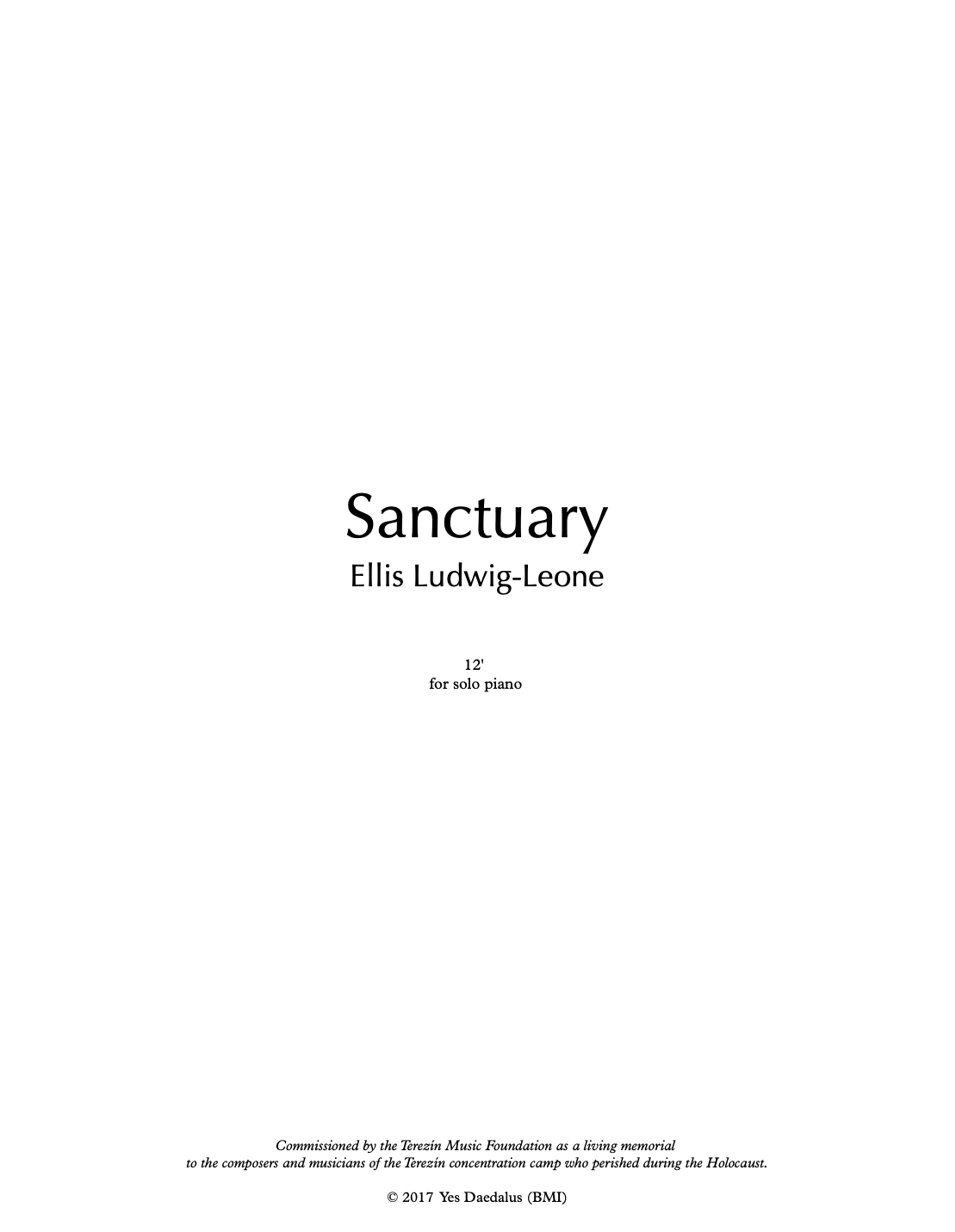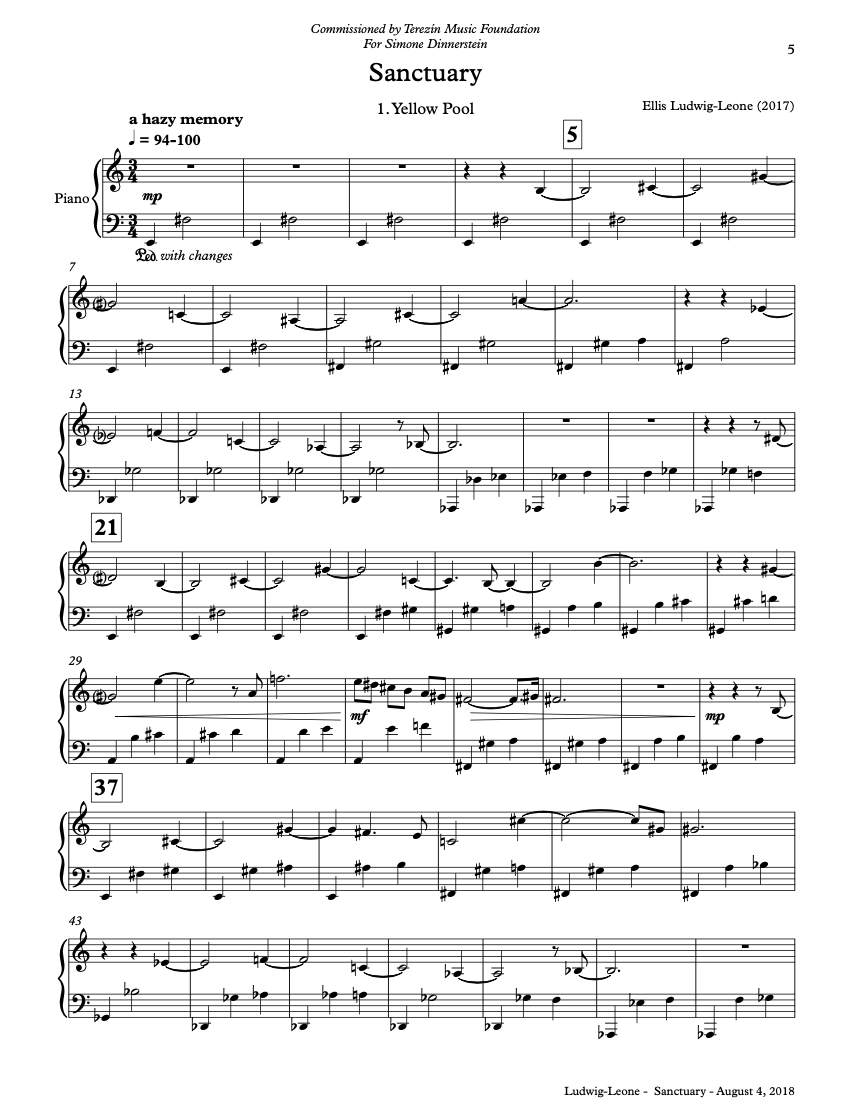Solo: piano - Sanctuary
Solo: piano - Sanctuary
Couldn't load pickup availability
Ensemble: solo piano
Duration: 12 minutes
Commissioned by: Terezín Music Foundation for Simone Dinnerstein
Premiered: Symphony Hall, Boston, Massachusetts
Note:
When I’m writing instrumental music, I am usually working with abstract musical ideas. Maybe there’s a battle between fast and slow music, or maybe there’s a troublesome G-sharp that changes the harmonic trajectory of the piece. Sometimes there’s a programmatic reason that these things are happening, but in writing music without words—and all the semantic meanings that words imply—the composer is freer from the aims of emotional specificity. There are no lyrics telling the listener how to feel, no female or male voices, no names, no places. Just pitches and rhythms and the web of relationships between them.
Writing this piece, however, was a very different experience, because it was inspired by something more personal: the artwork of my (and Simone’s) parents. As I wrote, I found the music coming from an emotional space, associated with memory, that I usually only access when I’m working with lyrics.
Each of the three movements of this piece is inspired by a different painting: Yellow Pool by Anne Leone (my mother), Gregory’s Party by Simon Dinnerstein (Simone’s father), and Sanctuary by Daniel Ludwig (my father). Each of the paintings are over ten years old, and I purposely chose them because they are pieces that Simone and I grew up with. The first two paintings are depictions of a young Ellis and a young Simone, respectively, as seen through our parents’ eyes. The third painting, Sanctuary, is a landscape of the woods near my childhood home.
The funny thing about being the child of an artist is that their work literally paints the walls of your memory. You see their paintings less as artworks and more as a backdrop to your own life. One of my earliest memories is sitting in my father’s studio, scribbling my own picture and listening to Paul Simon while he worked. Even now it is hard for me to approach my parents’ art with anything resembling an objectively critical eye, because how do you parse the artwork from the tangled web of memories and associations you have with it?
Also worth mentioning is the issue of the instrumentation: this is a piece for solo piano. Both Simone and I grew up taking piano lessons, and, as any parent can tell you, getting a young child to practice can become a shared family responsibility. I remember practicing alone for hours, my parents piping up from the kitchen when I strayed from the music for too long. Sitting at the piano and writing this piece felt like a time warp, taking me back to the days of learning Chopin, Rachmaninov, and Ravel. In response, I found an old-fashioned harmonic language that I thought I had left behind, most apparent in the first movement (a nod to Ravel, whose Piano Concerto in G was one of the first piano pieces I ever loved).
All of which is to say, there was a catharsis to writing this music that was unusual, and for that I would like to thank Mark Ludwig, my father’s cousin and director of TMF, who suggested the idea in the first place. I would also like to thank Daniel Ludwig, Anne Leone, and Simon Dinnerstein, without whom this piece (for artistic and biological reasons) would never exist.
Perusal score: view here
Share



